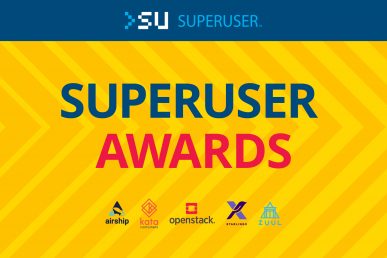Airship is getting ready to reach a milestone on its 1.0 voyage at the Open Infrastructure Summit Denver next week. A year after launching, the team is putting the final touches on its first release with a wide range of enhancements to security, resiliency, continuous integration and documentation, as well as upgrades to its platform, deployment and tooling features.
Airship is a collection of loosely coupled but interoperable open source tools that declaratively automate cloud provisioning. (Although the name brings to mind a dirigible, Airship tools are nautically themed.) It serves as a robust delivery mechanism for organizations that want to embrace containers as the new unit of infrastructure delivery at scale.
Starting from bare metal, Airship manages the full life cycle of infrastructure to deliver a production-grade Kubernetes cluster with Helm-deployed artifacts, including OpenStack-Helm. One workflow handles both initial deployments as well as future site updates. In managing your infrastructure, Airship has several goals:
- Simplicity: Infrastructure is managed through declarative YAML files and there’s one workflow for both deployments and updates. Airship doesn’t require operators to develop their own set of complex orchestration tooling to automate Airship.
- Flexibility: Containers and Helm charts are the basic unit of deployment for all software including Airship itself, pushing software orchestration logic to the edge. Expanding the software stack is as simple as adding new charts to Airship declarations.
- Repeatability: Platform state including all versions are specified declaratively, and Airship, Helm, and Kubernetes align containers, dependencies, and configuration in the same way every time.
- Resiliency: All jobs and services are run as containers, provide health status, and are healed by Kubernetes supervision – taking full advantage of native Kubernetes resiliency.
- Self-hosting: The Airship components themselves are deployed as Helm charts and run as services within Kubernetes. This allows them to be upgraded like any other software component in the system.
If you want to get started with Airship, there are several great ways to get moving:
- If you’re at the Open Infrastructure Summit next week, check out these sessions including users like AT&T running Airship in production as well as opportunities to join contributor onboarding.
- The Airship in a Bottle project gives you a complete all-in-one testing and development environment to give you basic, hands-on experience.
- When you’re ready to deploy to your data center, the Treasuremap outlines the configuration of a reference architecture. With nightly integration testing against the configuration guidelines, you can be certain that Treasuremap gives you an accurate view of how to configure and deploy Airship.
Airship has an active and welcoming community, with weekly development, design, and program meetings open to all. For immediate conversation with Airship developers and deployers, stop by the #airshipit IRC channel on Freenode, and keep up to date on the latest news with the Airship mailing list. The team will also be at the Open Infrastructure Summit in Denver during the week of April 29. There are over 10 sessions planned including:
- Lessons Learned running open infrastructure on bare metal Kubernetes clusters in production
- Bare metal provisioning in Airship, or “Ironic: it’s not just for OpenStack anymore”
- Securing your cluster network using Calico and OpenStack Helm Infra
- An Airship project update
- Airship project onboarding
We’re looking forward to sharing this exciting new release with you. Keep your eyes on the horizon in the coming week for more news, live demos and presentations from the Airship community. Find out more at the airshipit.org and join us at the Open Infrastructure Summit!
- OpenStack and Kubernetes show the power of open collaboration at KubeCon + CloudNativeCon Europe - June 20, 2019
- Airship: 1.0 ready to dock - April 26, 2019
- What’s new in latest release of the OpenStack Cloud Provider for Kubernetes - April 5, 2019

)










